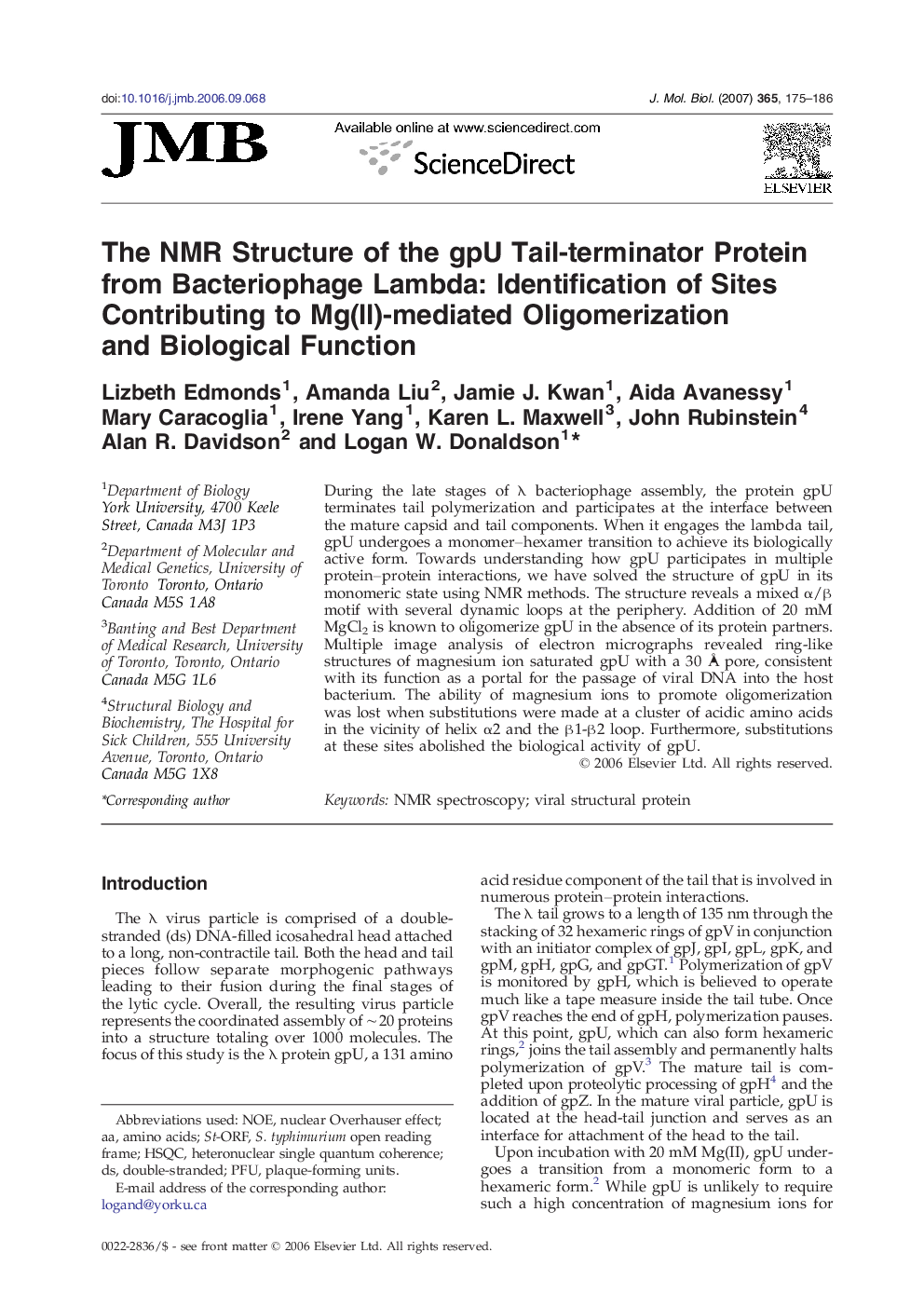| Article ID | Journal | Published Year | Pages | File Type |
|---|---|---|---|---|
| 2189196 | Journal of Molecular Biology | 2007 | 12 Pages |
During the late stages of λ bacteriophage assembly, the protein gpU terminates tail polymerization and participates at the interface between the mature capsid and tail components. When it engages the lambda tail, gpU undergoes a monomer–hexamer transition to achieve its biologically active form. Towards understanding how gpU participates in multiple protein–protein interactions, we have solved the structure of gpU in its monomeric state using NMR methods. The structure reveals a mixed α/β motif with several dynamic loops at the periphery. Addition of 20 mM MgCl2 is known to oligomerize gpU in the absence of its protein partners. Multiple image analysis of electron micrographs revealed ring-like structures of magnesium ion saturated gpU with a 30 Å pore, consistent with its function as a portal for the passage of viral DNA into the host bacterium. The ability of magnesium ions to promote oligomerization was lost when substitutions were made at a cluster of acidic amino acids in the vicinity of helix α2 and the β1-β2 loop. Furthermore, substitutions at these sites abolished the biological activity of gpU.
